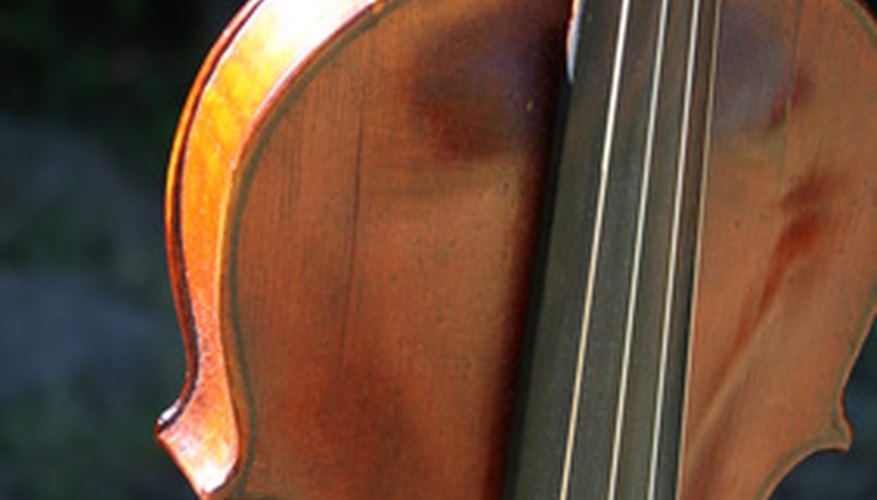Hide glue was once the most widely used woodworking adhesive. Its dependable strength and durability made it a choice for making fine furniture for centuries. While it has been largely displaced in the furniture industry by PVA glues, it is still used by guitar and violin makers. One of its chief advantages over modern glues for instrument-making is the ability to easily unglue the joints of an instrument for repair. This reversibility also makes removing hide glue from an existing joint an easy task.
- Hide glue was once the most widely used woodworking adhesive.
- One of its chief advantages over modern glues for instrument-making is the ability to easily unglue the joints of an instrument for repair.
Pour a small amount of hot (about 71.1 degrees Celsius) water over the glued surface. Allow it to soak for a few minutes. Soaking time will depend on the thickness of the glue. Usually two to four minutes will suffice.
Loosen the glue by scrubbing with a stiff-bristle brush.
Remove the loose glue with a clean, damp rag.
Repeat steps 1 through 3 until the surface is free of glue.
Remove the final traces of hide glue by wiping the surface with a clean rag soaked in vinegar.
TIP
Use a clean rag for each cleanup step. Hide glue is water-soluble and will dissolve into the rag if allowed to set. Allow the surface of the wood to dry before gluing.
WARNING
When removing hide glue from antiques or instruments, apply hot water only to the areas necessary for glue removal. Do not use boiling water. This will increase the risk of injury and may damage your project. It will not ease the removal of the glue.
